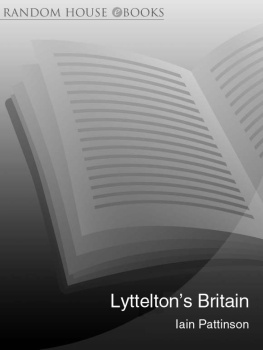Iain W.G. Forbes - The Last of the Druids: The Mystery of the Pictish Symbol Stones
Here you can read online Iain W.G. Forbes - The Last of the Druids: The Mystery of the Pictish Symbol Stones full text of the book (entire story) in english for free. Download pdf and epub, get meaning, cover and reviews about this ebook. year: 2012, publisher: Amberley Publishing, genre: Religion. Description of the work, (preface) as well as reviews are available. Best literature library LitArk.com created for fans of good reading and offers a wide selection of genres:
Romance novel
Science fiction
Adventure
Detective
Science
History
Home and family
Prose
Art
Politics
Computer
Non-fiction
Religion
Business
Children
Humor
Choose a favorite category and find really read worthwhile books. Enjoy immersion in the world of imagination, feel the emotions of the characters or learn something new for yourself, make an fascinating discovery.

- Book:The Last of the Druids: The Mystery of the Pictish Symbol Stones
- Author:
- Publisher:Amberley Publishing
- Genre:
- Year:2012
- Rating:5 / 5
- Favourites:Add to favourites
- Your mark:
- 100
- 1
- 2
- 3
- 4
- 5
The Last of the Druids: The Mystery of the Pictish Symbol Stones: summary, description and annotation
We offer to read an annotation, description, summary or preface (depends on what the author of the book "The Last of the Druids: The Mystery of the Pictish Symbol Stones" wrote himself). If you haven't found the necessary information about the book — write in the comments, we will try to find it.
The Last of the Druids: The Mystery of the Pictish Symbol Stones — read online for free the complete book (whole text) full work
Below is the text of the book, divided by pages. System saving the place of the last page read, allows you to conveniently read the book "The Last of the Druids: The Mystery of the Pictish Symbol Stones" online for free, without having to search again every time where you left off. Put a bookmark, and you can go to the page where you finished reading at any time.
Font size:
Interval:
Bookmark:


To my loving wife Susan
and my children, Neil, Lyndsay and Colm
Many thanks to my parents, Mima and Bill Forbes, and my wife Susan, who have continually encouraged me in all my endeavours and have supported me throughout this project. My father for his enthusiasm for the subject and my mother for proofreading this book. I would also like to thank Jane Dormon for contributing her illustrations, which were invaluable. A special mention also for Theo Zawadzki for accompanying me on field trips and also to Briain Wilson and Ceri Davies for leading me astray on one memorable Pictish stone forage. Finally, I would like to thank all my other friends and family who have had to put up with me enthusing about the Picts!
First published 2012
Amberley Publishing
The Hill, Stroud
Gloucestershire, gl5 4EP
www.amberleybooks.com
Copyright Iain W. G. Forbes 2012
The right of Iain W. G. Forbes to be identified as the Author
of this work has been asserted in accordance with the
Copyrights, Designs and Patents Act 1988.
All rights reserved. No part of this book may be reprinted or reproduced or utilised in any form or by any electronic, mechanical or other means, now known or hereafter invented, including photocopying and recording, or in any information storage or retrieval system, without the permission in writing from the Publishers.
British Library Cataloguing in Publication Data.
A catalogue record for this book is available from the British Library.
ISBN 978-1-4456-0230-1 (PRINT)
ISBN 978-1-4456-1215-7 (eBOOK)
The stars,
That nature hung in heaven, and filled their lamps,
With everlasting oil, to give due light
To the misled and lonely traveller.
John Milton (16081674)
The Enigmatic Picts
In the past it was easy to dismiss the Dark Age people of northern Europe as simply barbarian savages with little to offer except resistance to the legions of Rome. However, we now know that the disparate tribes that dominated North West Europe before, during, and after the Roman Empire, were much more sophisticated than many have given credit for in the past. Archaeological excavations continue to reveal exquisitely fashioned artefacts, including weaponry and gold jewellery, which provide information on their technological and artistic prowess. As a result we have a greater insight into the world that these so-called barbarians lived in. We also know that their societies were complex and ordered with highly developed social structures. There is even evidence that the Celts, for example, had sophisticated legal and belief systems, an interest in astronomy and placed great emphasis on poetry. These aspects of life were regulated by a theological order, known as the druids, who appear to have operated at a trans-tribal level, with novices perhaps even travelling considerable distances to study at specific locations (the Isle of Anglesey for example). While the culture of many of these Celtic peoples and tribes have become increasingly familiar to us, there would appear one major exception: the Picts of northern Scotland. This vanished people remain as mysterious as ever, with scholars unable to agree on many basic issues including what language they spoke and their cultural origins. Without a single surviving decipherable sentence written in Pictish there is no consensus on whether they were even Celtic or represented a much older indigenous people with little relation to the rest of European mainstream culture.
It is hoped that this book will shed considerably more light on the Picts, emphasise their considerable achievements and help place their culture firmly in the Celtic mainstream.
Picts: First Contacts
In the first century AD, Roman legions pressed northwards into the land we refer to today as Scotland. There they encountered what to them must have been just another barbarian people. Although it is clear that attempts were made to subdue these northern tribes, the Romans were never to occupy this territory permanently, and the native population was destined to remain outside the empire. The Romans initially referred to these indigenous tribes by various names including the Caledonians, Dicalydones, and Maeatae. Later they were to drop these terms in favour of the collective and more familiar name Picti or Picts. In AD 142, during the reign of the emperor Antoninus Pius, an attempt was made to establish a permanent defensive wall. The wall ran across southern Scotland between the rivers Clyde and Forth for nearly 40 miles, and featured forts stationed every 2 miles along its length. The rationale behind this massive project would appear to have been the isolation of the Pictish tribes to the north. However, after just twenty years the Romans had retreated from this Antonine Wall to what is known today as Hadrians Wall, some 60 miles further south. This even larger construction project represented the Romans most fortified frontier, complete with forts and mile castles, and would become the northernmost boundary of the empire until the fifth century. Beyond the wall there was nothing that the Romans considered to be of value.
To us the term barbarian, particularly in the context of the Picts, may conjure up images of mindless, naked, and tattooed savages bent on wanton destruction, and this indeed is the sort of image that many people may still associate with the ancient peoples of Scotland. To the Romans it had a wider definition; it included any peoples that had not embraced Rome and its ways and therefore their civilisation. Is it fair for us to continue to use such a term in connection with the various peoples who inhabited territory beyond the northern confines of the Roman Empire? Is it possible that these largely forgotten peoples of Europe actually had well-developed societies with a level of sophistication that would surprise us? Disappointingly, if the Romans recorded anything about the Caledonians and other tribes, their customs, their culture, or any languages they spoke, very little has survived the centuries. What has survived relates principally to Roman military campaigns into their territory. We cannot even be sure what they called themselves. It is thought by many scholars that the very name Picti was coined by Roman soldiers, and referred to the purported custom of Caledonian warriors painting or tattooing designs on their bodies.
One of the earliest and perhaps most important Roman texts relating to these people is a biography of the Roman general and emperor Agricola. The text Agricola was written by the military author Tacitus (who also happened to be Agricolas son-in-law) and contains a substantial description of the Roman campaign through northern Scotland in AD 83 to 84, including a speech attributed to one of the leaders of the Caledonians, Calgacus. However, both the biography and Calgacus speech reveal little about the Caledonians or their society. The speech was supposedly delivered to some 30,000 Caledonian warriors prior to the battle of Mons Graupius in AD 84, which was probably fought in Aberdeenshire in the north-east of Scotland. The Romans in previous years had suffered a number of serious setbacks at the hands of these tribes, including perhaps the humiliating loss of a legion. The Roman general on this new campaign was Agricola, and he had amassed a considerable force of some four legions, 8,000 auxiliaries, and 5,000 cavalry, before marching them deep into Caledonian territory. The battle according to Tacitus was a terrible defeat for the native tribes. Calgacus own fate is unknown, but it is probable that many Caledonians were captured and taken to Rome for public humiliation and execution or sold into slavery. Despite this considerable setback for the Caledonians, in the longer term they were able to re-establish themselves, and remain a thorn in the imperial foot for the duration of the Roman occupation of the island of Britain.
Next pageFont size:
Interval:
Bookmark:
Similar books «The Last of the Druids: The Mystery of the Pictish Symbol Stones»
Look at similar books to The Last of the Druids: The Mystery of the Pictish Symbol Stones. We have selected literature similar in name and meaning in the hope of providing readers with more options to find new, interesting, not yet read works.
Discussion, reviews of the book The Last of the Druids: The Mystery of the Pictish Symbol Stones and just readers' own opinions. Leave your comments, write what you think about the work, its meaning or the main characters. Specify what exactly you liked and what you didn't like, and why you think so.

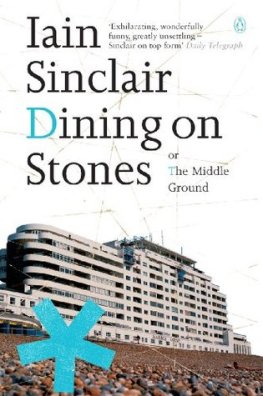
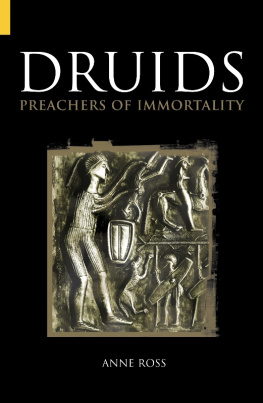

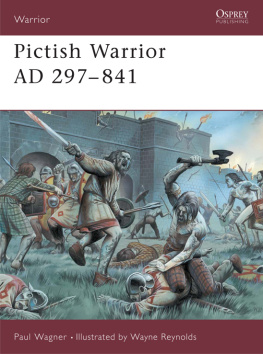

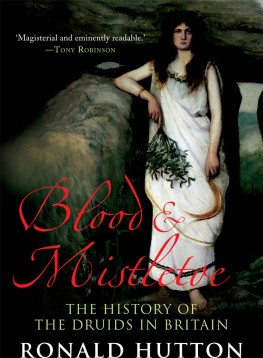
![Iain Maitland [Iain Maitland] - Mr Todd’s Reckoning](/uploads/posts/book/141709/thumbs/iain-maitland-iain-maitland-mr-todd-s.jpg)

